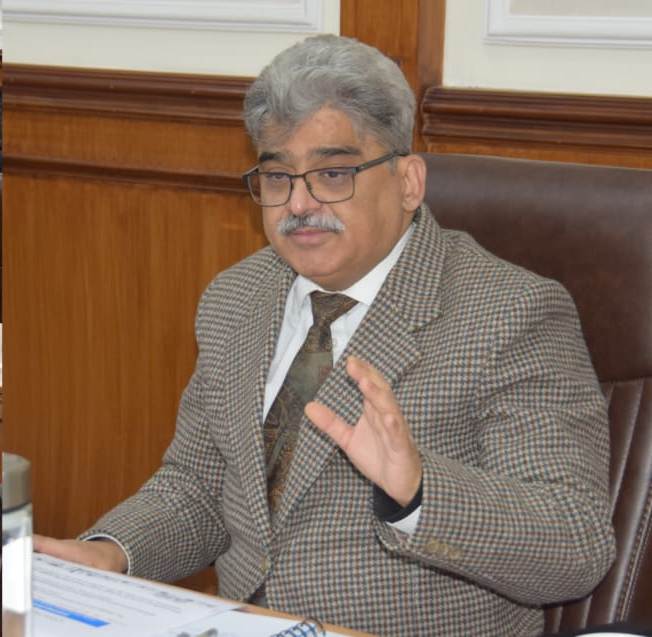By: Naveen P Singh
The Indian agricultural sector is a cornerstone of the economy, contributing approximately 18% to the GDP and providing livelihoods for nearly 58% of the population. This essential sector ensures food security and supports numerous allied industries. However, as we approach the Union Budget for FY2025-26, we must recognize the myriad challenges that threaten its stability and growth. In the short term, volatile commodity prices and increasing farmer indebtedness compromise immediate productivity and well-being. Medium-term challenges include the urgent need to adopt sustainable practices to combat the adverse effects of climate change, which can disrupt traditional farming methodologies. Looking further ahead, the sector must innovate and evolve to maintain its vital position in a rapidly changing economic landscape. Policymakers must strategically balance these immediate pressures with long-term sustainable growth initiatives in the upcoming budget. By prioritizing immediate relief efforts for distressed farmers, investing in climate-smart agricultural practices, and fostering innovation, the government can create a resilient agricultural framework that supports economic growth and secures the future of Indian agriculture.
A Quantum Leap in Agricultural R&D – Need of the Hour
Indian agricultural research and development (R&D) is severely underfunded, at only 0.4% of agricultural GDP compared to the global average of 1%. This shortfall hinders innovation and the adoption of solutions for critical challenges such as climate-resilient crops, water management, and advanced pest control. The budget must double the R&D allocation, focusing on institutions like ICAR and SAUs while encouraging private sector investments through improved CSR tax benefits. These initiatives will cultivate a strong collaboration ecosystem among academia, industry, and farmers, ensuring breakthroughs that can enhance agricultural productivity and sustainability.
Bridging Infrastructure Gaps to Reduce Post-Harvest Losses
Post-harvest losses in India range from 10-20% annually, underscoring storage, logistics, and distribution inefficiencies. Despite allocations under the Agriculture Infrastructure Fund, these gaps persist. This budget should prioritize building rural storage silos, cold chains, and digital platforms to reduce wastage and enhance farmer-market linkages. Moreover, the growing food processing sector and increasing per capita incomes drive demand for processed foods in India, necessitating a robust supply chain. Investing in secondary agricultural activities, such as mushroom farming and beekeeping, can create additional rural employment. Expanding micro- irrigation initiatives will further bolster productivity while addressing water scarcity.
Climate Resilience: A New Pillar of Agricultural Policy
Climate change presents a significant threat to Indian agriculture due to unpredictable weather, unseasonable rainfall, and soil degradation. A strong commitment to sustainable practices, including crop diversification and natural and organic farming, is essential. Expanding the Pradhan Mantri Krishi Sinchayee Yojana to cover water-stressed areas and providing subsidies for solar-powered irrigation can help alleviate climate stressors. Targeted mission-mode programs to increase oilseed and pulse production can tackle climate challenges while reducing import dependence, thus enhancing self-sufficiency.
Diversification: The Key to Farmer Economic Stability
Diversifying income sources into allied sectors like livestock, fisheries, and horticulture is essential for reducing farmers’ dependency on crop incomes. Livestock accounts for 28% of agricultural GDP, and fisheries require increased funding through targeted schemes like the Animal Husbandry Infrastructure Development Fund and PMMSY. Likewise, investments in horticulture infrastructure, such as freezing, storage and processing facilities, can enhance the sector’s export potential. The budget should integrate these sectors into a cohesive farming system that maximizes benefits for farmers.
Digital Agriculture: Transforming Farming Practices
The digital transformation of agriculture can revolutionize decision-making and efficiency. Platforms like e-NAM should be expanded to include all mandis, ensuring transparency and market accessibility. Integrating advanced technologies such as AI and blockchain into supply chain management, crop insurance, and soil health monitoring can significantly improve efficiency and risk management. Establishing 10,000 Farmer Producer Organizations (FPOs) requires robust financial and technological support to empower small and marginal farmers through enhanced collective bargaining and market access.
Bridging Spot and Futures Markets with Digital Ecosystems
The Union Budget should focus on integrating spot and futures markets by developing robust digital ecosystems and data-driven frameworks. Expanding digital spot markets, such as e- NAM, to include all Mandis and linking them with electronic warehouse receipts (e-WRs) can enable farmers to monetize stored produce, minimize distress sales, and comply with global trading standards. A centralized data repository for commodities, consolidating inputs from warehousing systems, trading platforms, and government agencies, can facilitate accurate price discovery and informed decision-making in futures markets. Furthermore, consistent policy support is essential to harmonize the development of spot and futures markets, ensuring they function cohesively. This approach will promote transparency, enhance price discovery, and create a dynamic agricultural market ecosystem, empowering all stakeholders while boosting India’s competitiveness in global markets.
Unlocking Credit Access for Small and Marginal Farmers
Access to institutional credit continues to be a significant challenge for small and marginal farmers, including tenant farmers, whose numbers rise as India urbanizes. These farmers frequently turn to informal lenders who charge high interest rates. Increasing the agricultural credit target from ₹20 lakh crore to ₹25 lakh crore, with a focus on small and tenant farmers, is essential. Streamlining processes under the Pradhan Mantri Fasal Bima Yojana (PMFBY) can boost crop insurance adoption. A stronger credit and insurance framework can create a safety net for farmers, lowering their financial vulnerabilities and encouraging productive investments.
Empowering Women: The Backbone of Indian Agriculture
Women comprise over 50% of India’s agricultural workforce and encounter systemic barriers to accessing resources and participating in decision-making platforms. While they represent nearly 33% of agricultural landowners, they frequently lack control over income and assets. Gender- specific programs that promote skill development, land ownership rights, and access to institutional credit are vital. The budget should prioritize initiatives to empower women farmers, acknowledging their essential role in ensuring food security and rural prosperity.
Making India a Global Leader in Agricultural Trade
India’s agricultural exports, valued at $50 billion for 2023-24, possess significant growth potential. Establishing a ₹10,000 crore fund to enhance export infrastructure and logistics will improve global competitiveness. Investments in organic and value-added products can target high-value international markets. Strategic trade partnerships and bilateral agreements should emphasize reducing non-tariff barriers and aligning Indian exports with global standards. A statutory body consisting of farmer representatives and trade experts can ensure comprehensive decision-making that protects domestic farmers while enhancing global competitiveness.
In summary, the Union Budget FY2025-26 presents a crucial chance to reimagine the future of Indian agriculture. By addressing pressing challenges and implementing strategic initiatives, such as prioritizing research and development, enhancing infrastructure, fostering climate resilience, and promoting diversification, the government can elevate agriculture to a globally competitive industry. Additionally, empowering farmers through digital advancements and ensuring equitable access to credit will fortify the economy’s backbone and provide sustainable livelihoods for millions. Setting up an Agricultural Development Council (ADC) on the lines of GST council is need of the hour. Consequently, Indian agriculture can become a powerful symbol of growth and innovation, setting a benchmark for others.
(Dr. Naveen P Singh is Member Official, Commission of Agricultural Cost and Prices, Ministry of Agriculture Farmers Welfare; Views Expressed are purely personal)
Courtesy PIB Srinagar





